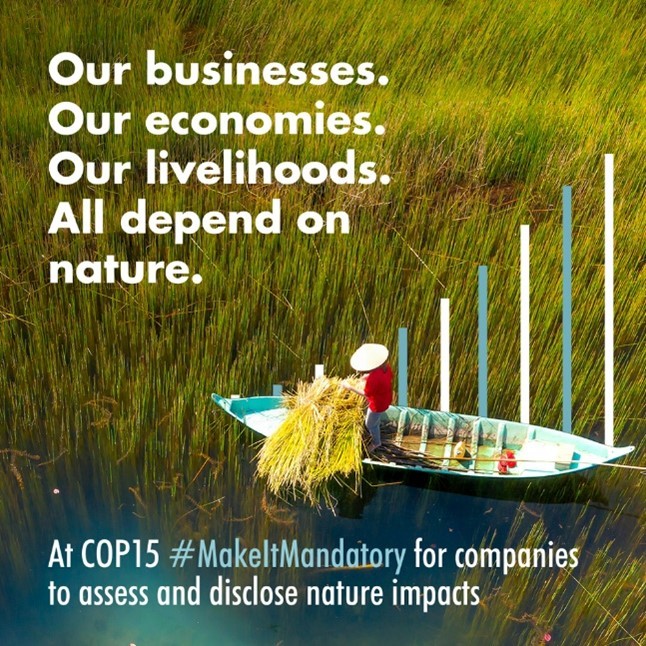By Helen Avery, Director of Nature Programmes, Green Finance Institute
In 2010, the Aichi Targets were set at the Convention for Biological Diversity (CBD) COP10 in Japan. Twelve years and five more Biodiversity COPs later, not one of those 20 conservation targets have been reached, and we find ourselves within the age of the Sixth Extinction.
Indeed, as representatives from 196 governments around the world gathered in Montreal these last two weeks to set a Global Biodiversity Framework (GBF) at COP15 with new targets and goals, Mark Carney reminded us that current extinction rates are running more than 100 times the average of the past several million years and that 10 football fields a minute are being deforested in the areas most critical for carbon storage and biodiversity.
While COP27 in November, and indeed the World Cup, received greater press coverage over these last few weeks, this COP15 was perhaps the most critical moment for the world this year. As Elizabeth Mrema, Executive Secretary UN Biodiversity COP15 shared in our Financing Nature podcast: “Right now, we can still change the trajectory of the planet and humankind. But if we don’t act now, we will cross that threshold and there will be no turning back.”
As COP15 began, both Elizabeth Mrema and CBD Information Officer David Ainsworth stressed that the outcome needed from the Conference was for “a strong consensus to emerge on a strong set of goals for 2050, and achievable targets for 2030”, alongside an achievable plan for implementation and resource mobilization.
With the Agreement now signed and the vast exhibition stands and pavilions at Le Palais des congrès de Montréal being dismantled, the question is – was that achieved?
In terms of if there was a ‘strong consensus’, the answer has to be ‘yes’. Before we dissect the wordings of the four goals and 23 targets that make up the post-2020 Global Biodiversity Framework that the 196 decision-makers have painstakingly negotiated, it is worth taking a moment to celebrate this fact alone – that 196 decision-makers from countries around the world were able to reach an agreement, a strong consensus. It was never a given and, at times, the negotiations looked close to falling apart.
Were the goals strong and targets achievable? Yes. Were they as ambitious as we would have liked? Probably not. Environmentalists have expressed some wordings were too vague. Some targets feel like they lack the robustness to hold signatories to account. The financial and business sectors, which turned up in a force not previously witnessed at a Biodiversity COP, did not get exactly what they had wished for either.
Through the Business for Nature’s Make it Mandatory campaign, they had collectively pushed for wording on “mandatory disclosures from large financial institutions and businesses” on nature-related impacts and dependencies. “Mandatory” didn’t make the final cut, though it has been commented that this was always to be expected given some of those 196 countries were Afghanistan, Syria, South Sudan, Ukraine – countries that cannot possibly commit to applying such pressure on their domestic companies within the next eight years.
The Make it Mandatory campaign, however, can be proud that it has firmly put financial risk and mandated disclosures on the global nature agenda, and, alongside the Finance for Biodiversity movement, has sent a strong signal to governments and regulators that disclosure of impacts and dependencies is vital, as too is the Taskforce on Nature-related Financial Disclosures as the tool for that delivery. It seems inevitable that at least several governments that can, will mandate nature-related disclosures in the coming years, and a growing number of central banks will follow in the footsteps of De Nederlandsche Bank (DNB) in assessing their material financial risk born of nature-related dependencies and impacts. It is worth remembering these will not be small figures – an estimated $2.7 trillion is at risk by 2030 globally due to ecosystem and biodiversity loss.
At times during COP15, the regular attendees of scientists, eNGOS and governments commented that it was unnerving to see so many from the business and finance community in the halls. There is understandably mistrust. But ambitious targets are nothing without implementation. And while the Aichi targets of 2010 were ambitious – the major reason they were missed was due to a lack of financing and also financial, business and economic systems change. Without these, there is no implementation.
The tone and wording of the Montreal targets compared to the Aichi targets reflects well this new understanding, even if not as ambitious in scope as some would have liked.
- Target 14 spoke of “progressively aligning all relevant public and private activities, fiscal and financial flows with the goals and targets of this framework.”
- Target 15 set out ensuring “that large and transnational companies and financial institutions:
(a) Regularly monitor, assess, and transparently disclose their risks, dependencies and impacts on biodiversity including with requirements for all large as well as transnational companies and financial institutions along their operations, supply and value chains and portfolios; and
(b) Provide information needed to consumers to promote sustainable consumption patterns.”
- Target 18 got specific on harmful subsidies – demanding they be reduced “by at least 500 billion United States Dollars per year by 2030.”
There was also focus on enabling the flow of money now. With regards to the mobilization of capital and in particular, the development of markets and innovative funds, Target 19 listed multiple points including:
- “leveraging private finance, promoting blended finance, implementing strategies for raising new and additional resources, and encouraging the private sector to invest in biodiversity, including through impact funds and other instruments;”
- “Stimulating innovative schemes such as payment for ecosystem services, green bonds, biodiversity offsets and credits, benefit-sharing mechanisms.”
In addition, rich nations also committed to pay an estimated $30 billion a year by 2030 to poorer nations through a new biodiversity fund that will be created under the Global Environment Facility. And so, it would not be disingenuous to say that Mrema and Ainsworth’s ambition for “an achievable plan for implementation and resource mobilization” was answered by the delegates.
While it is impossible to please everyone in global negotiations, there is much to celebrate coming out of COP15. In addition to the above, targets included the protection of 30% of the planet for nature by the end of the decade – the hoped-for 30×30 ambition – which is as close to a 1.5 degree equivalent for nature that we can get at present. Target 7 also offers specifics on the reduction of agrochemicals that will surely result in a sharp change of sentiment towards that sector in the post GBF world and deserves deeper reflection than we have time for here. Targets 1 and 3 embedded the recognition of the rights of Indigenous Peoples and Local Communities – peoples without whom the goals also cannot be delivered.
Will the GBF be delivered? This is of course the natural question to ask after taking stock. One would hope so. The sentiment, the camaraderie, the commitment and enthusiasm of the thousands that came to Montreal from across sectors and geographies was humbling and instills hope that it will. There were many announcements made that indicate, at least at present, a commitment to ensuring the Framework is delivered:
- 150 financial institutions representing $24 trillion called on world leaders to adopt an ambitious Global Biodiversity Framework
- The International Development Finance Club (IDFC) announced a position paper and commitments to support an ambitious and effective post-2020 Global Biodiversity Framework with a potential to mobilize more than $100 billion of biodiversity finance by 2027
- Mark Carney called on Financial Institutions to integrate nature & biodiversity into transition plans
- The International Sustainability Standards Board (ISSB) announced enhancements to climate disclosures to include nature and a just transition.
- Nature Action 100 launched
- The German government announced a EUR29m grant to Taskforce on Nature-related Financial Disclosures (TNFD) and partners to accelerate uptake globally.
Beyond the Framework itself and the commitments and announcements, COP15 felt like it marked a turning point – the end of an era when it’s acceptable to set ambitious targets without giving due thought to how those targets will be accomplished and to the stakeholders that require support for delivery; and the beginning of an era in which nature no longer plays second fiddle to climate. Keeping the momentum going and remaining focused on identifying and unlocking barriers and developing practical solutions will be key.
If you are interested in further reflections from COP15 while the conference was taking place, we spoke to stakeholders from across the public and private sector from Schroders, Federated Hermes, natcap research, Taskforce on Nature-related Financial Disclosures (TNFD), United Nations Environment Programme Finance Initiative (UNEP FI), Junglekeepers, Nestlé, WBCSD – World Business Council for Sustainable Development & Finance for Biodiversity in Montreal – listen here.
Photos by Helen Avery and Scott Webb



